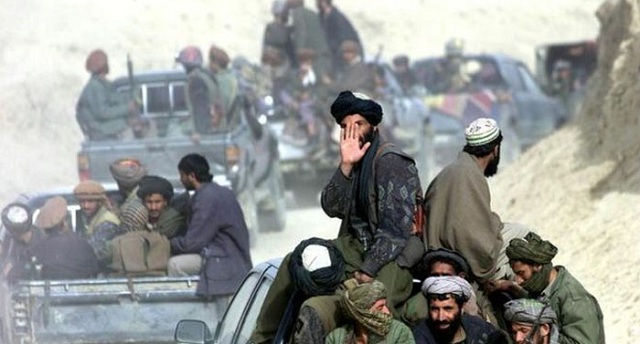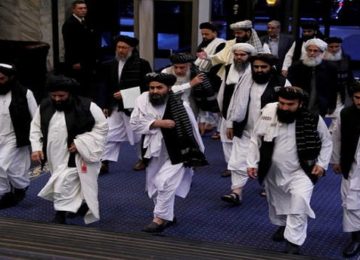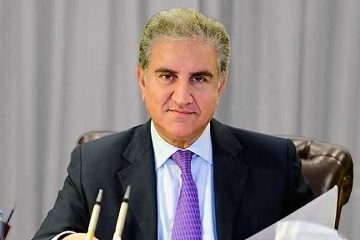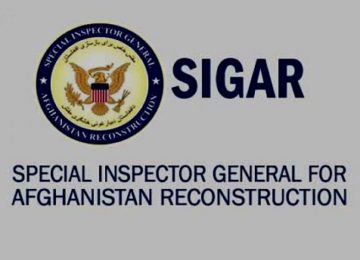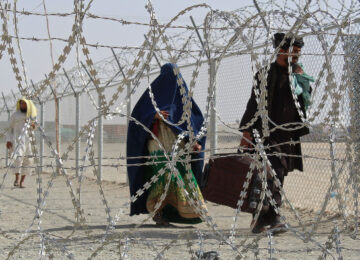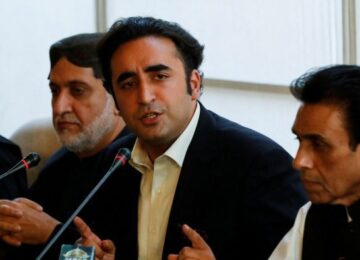January 09, 2019
It is argued that the emergence of Taliban in the mid-1990s has changed the makeup and socio-political dynamics of the Afghan society. Interestingly, emergence of Taliban is not a result of class struggle or an ethnic/tribal struggle. The Taliban are a by-product of Afghan society’s power struggle, which after withdrawal of the Soviets, resulted chaos in form of civil far with warlords switching sides according to their convenience.
Various Mujahedeen groups, even before the Soviet withdrawal, were engaged in a struggle for power control. It now transpires that their struggle was not for the ideology or people; it was a pure power struggle in which ethnicities played a major role. It was reminiscent of 18th century power struggle in Afghanistan where you were either a victor or a vanquished. Hence, the conflict was not as simple as many had tried to analyse.
There is hardly any difference between the Taliban and other warring groups in Afghanistan.; both are ultraconservatives; ruthless in bludgeoning their opponents to submission; depend largely on drug money, and violate human rights, especially women’s rights, with impunity. This has not happened after 9/11 but the Soviet invasion of Afghanistan created a culture of impunity amongst the Mujahedeen groups which were struggling to create a niche for their groups by capturing territory. This rat race damaged the centuries old tribal structure which hinged on traditions and Pashtunwali, a tribal code of conduct based on hospitality, revenge and honour (or ghairat). Because of these factors, conflict in Afghanistan continued even after the US invasion in 2001.
In the aftermath of 2001, the democratic process introduced in Afghanistan has not achieved desired results. This is because the existing system has created oligarchies on the basis of ethnicities causing permanent tension in the society where powerful could go scot-free. American watch dog Special Inspector General for Afghanistan Reconstruction (SIGAR) has in many of its reports pointed to the alarming trend of ethnic biases in the Afghan security forces, including police. Therefore, security forces as a vital instrument of the state to guarantee security for the people and a tool in the hand of a government to establish its writ failed to come up to the expectations of the people. Moreover, the first casualty of the US system in Afghanistan was “good governance”.
Moreover, both the US and Afghan governments failed to promote a political culture in the country to run the affairs of the state. On paper, there may be over 70 political parties in the country but the candidates cannot contest elections on their party tickets. Afghan parliament (woolasi Jirga) elections are held on non-party basis which adds to the chaos when important issues are brought for consideration. Each member in the parliament bargains for himself rather than representing a political party. Therefore, due to these mishaps, the political and democratic system in the country failed to take off.
During the past few years, the ethnic divide in Afghanistan has also broadened. The Tajik dominated erstwhile Panjshiri group dominated the Karzai government from the beginning. At one point, there were three thousand generals in the armed forces, ministries of Defence and Interior, overwhelmingly Tajiks. Afghans intelligence service, NDS, was manned by Tajiks and ex-communists. The largest ethnic group, Pashtoons, were deliberately ignored due representation in all departments of the government, especially national security institutions. It is also argued that “Neglect of Pashtuns” was somewhat capitalized by the Taliban, who reconsolidated their ranks and started their activities by 2004 from the rural areas of the country.
In the current situation, one has to ask whether Afghanistan had the potential of becoming a democratic and progressive state.
Many argue that given the historic facts and ethnic dynamics of Afghanistan, a monarchical rule would have suited the country which could have kept various ethnic groups united. However, despite return of former King Zahir Shah and designation of his status as father of the nation, the non-Pashtuns in Karzai regime strongly resisted revival of constitutional monarchy in the country. If one looks at the region’s history, Pashtuns are accustomed to monarchies; Pashto folklore talks of “Padishah” or “Bacha” (the King). Same folklores speak about “kind but brave king” or “ruthless but just king”. Amir Abdul Rahman is considered as a “ruthless but just king” while Zahir Shah is remembered as “kind but brave king”.
Therefore, many have now started wondering whether, post 2001, in the absence of a stable monarchy and failure of Afghan leaders to provide stability in the country, whether the Taliban are being looked upon as “an alternative”. This question is doing rounds because the US, engaging in Peace Talks with the Taliban, has somewhat accepted the Taliban as a “legitimate” stakeholder in the Afghan peace process.
Because of this, the Taliban are likely to give assurances of “good conduct” by not allowing Al-Qaida or Daesh/ISIS to take roots in Afghanistan. However, it is not going to be as easy as it sounds. The current dispensation in the country, with outside supporters, are going to fiercely resist Taliban’s revival. But Taliban seem to be confident that resistance to their comeback would not long last. Second, according to serious Afghan observers, in anticipation to the Taliban’s comeback, even government-controlled areas are gearing up for the change such as the ratio of shuttlecock burqas have suddenly gone up in Kabul and other towns while men have started growing beards. Third, recent interviews by some Taliban leaders and spokesman show that there is realization within the Taliban ranks that they cannot live in isolation and their interpretation of Islam would continue to be a source of concern not only to international community but also to the Muslim world.
However, the question remains whether a majority of Afghans would accept the group taking power?
The emerging scenario whereby Taliban may regain control of the country, or a substantial part of it, seems to augur well for the Pakistani policy makers. However, a cautious approach towards the religious militia would be in order. The past experience shows that Pakistan got itself isolated at the hands of Taliban while at the same time our support to the Taliban polarized the Pakistani society; sectarian forces gained more ground in the country and country’s laws were conveniently flouted by the religious zealots.
It also promoted vigilantism in the country causing grave concern to the international community; Pakistani society got radicalized to the extent that Tehreek Taliban Pakistan (TTP) started issuing dictates as a parallel government reminiscent of the Afghan Taliban. Hopefully, the government of Pakistan would not allow repeat of TTP’s dreaded rejuvenation.
Pakistan needs to understand that even if the Taliban may seem suitable for Afghanistan, because of the structure of Afghan society, it certainly does not go well with the Pakistani culture and society. Hence, any decision that the Pakistani policy makers take vis-à-vis Afghanistan and Taliban needs to be taken in the larger interest of Pakistan.
The writer Asif Durrani is a former Ambassador.



